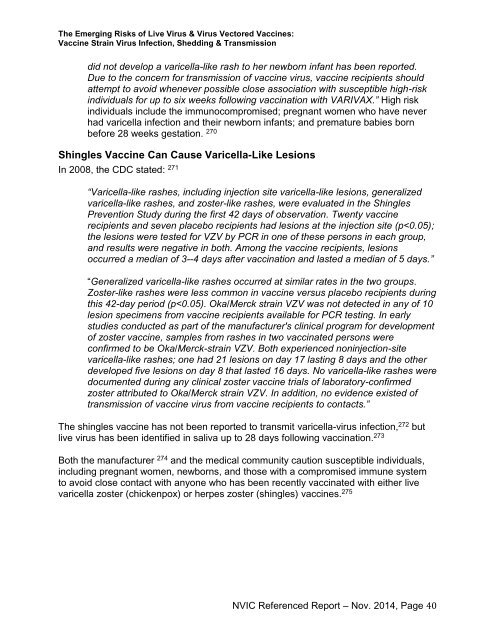You also want an ePaper? Increase the reach of your titles
YUMPU automatically turns print PDFs into web optimized ePapers that Google loves.
<strong>The</strong> <strong>Emerging</strong> <strong>Risks</strong> <strong>of</strong> <strong>Live</strong> <strong>Virus</strong> & <strong>Virus</strong> <strong>Vectored</strong> <strong>Vaccines</strong>:<br />
Vaccine Strain <strong>Virus</strong> Infection, Shedding & Transmission<br />
did not develop a varicella-like rash to her newborn infant has been reported.<br />
Due to the concern for transmission <strong>of</strong> vaccine virus, vaccine recipients should<br />
attempt to avoid whenever possible close association with susceptible high-risk<br />
individuals for up to six weeks following vaccination with VARIVAX.” High risk<br />
individuals include the immunocompromised; pregnant women who have never<br />
had varicella infection and their newborn infants; and premature babies born<br />
before 28 weeks gestation. 270<br />
Shingles Vaccine Can Cause Varicella-Like Lesions<br />
In 2008, the CDC stated: 271<br />
“Varicella-like rashes, including injection site varicella-like lesions, generalized<br />
varicella-like rashes, and zoster-like rashes, were evaluated in the Shingles<br />
Prevention Study during the first 42 days <strong>of</strong> observation. Twenty vaccine<br />
recipients and seven placebo recipients had lesions at the injection site (p


